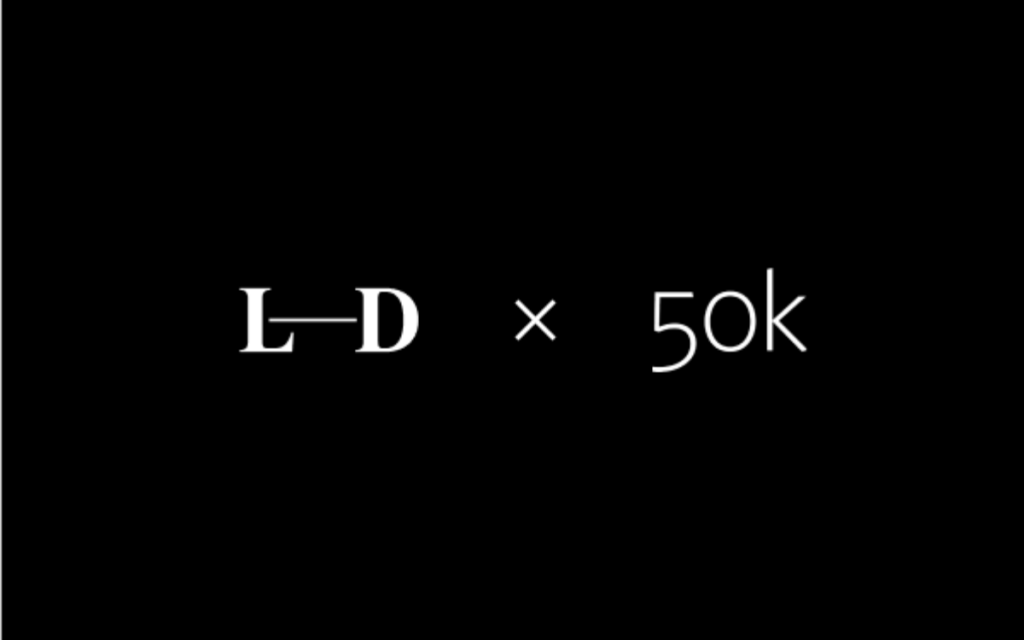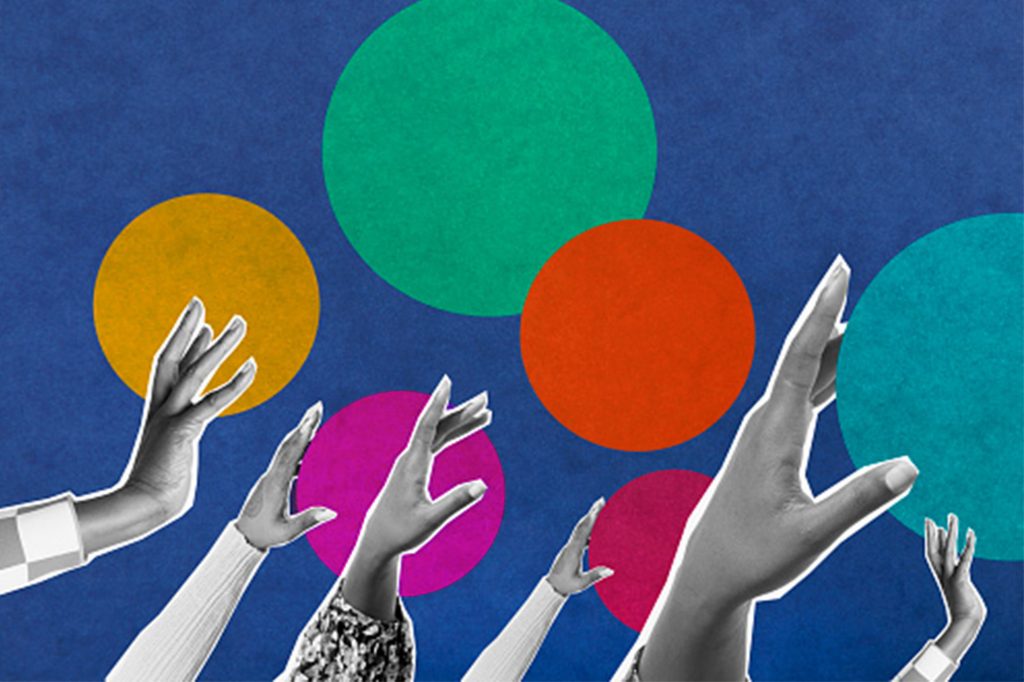How We Can Advance Equity and Inclusion Through the Stories We Tell
As storytellers, we have an opportunity—and a responsibility—to change the narrative for the better. It’s a process that requires attention and intention, but like a muscle, it gets stronger the more you work at it.
Margaret Myers is a director on the editorial team at Long Dash. She is a former journalist who managed online coverage at PBS NewsHour and ESPN and led the features department at the Amarillo Globe-News. Janeen Williamson is a diversity, equity, and inclusion practitioner. She formerly led business partnerships at Long Dash and NPR.
Last summer, during America’s reckoning with race following the police killings of Black Americans, audiences were gripped by coverage from the resulting Black Lives Matter protests. For the storytellers—the journalists, communicators, and yes, even brand leaders—audiences looked to during this consequential moment, a heightened sense of responsibility emerged. With something as emotional, tragic, and important to our nation’s history and future, the stories we told about these events, and how we told them, needed to be informed and intentional.
As storytellers we have an outsized opportunity to actually change the narrative. We can play a role in advancing equity and inclusion in the work we publish. It’s not only the right thing to do, it’s what people expect from brands. It’s a prerequisite to building loyalty and trust.
With that opportunity in mind, meaningful developments were taking place to reconsider how we tell our stories. For example, standard bearers for American journalism, from the Associated Press to the New York Times, decided last year to make “Black” official, with a capital “B.”
To some, it might seem like a modest style change. But it is significant. Because words matter, and the way we use language to express ideas, connect with one another, and confer respect on a group of individuals and their culture matters.
Our nation was built on the notion that the color of our skin determines our value as a person. If “black” is a color, “Black” transcends color. This new proper noun signals a recognition of the Black experience and generations’ worth of contributions to American culture.
With this backdrop, we decided to take a closer look at our own editorial practices. We tell stories every day, right here on Altered and on behalf of our clients. Some of our work intersects with issues of race and equality and some of our work doesn’t. But all of our work requires us to recognize a wide breadth of perspectives in the stories we tell and to ensure representation—not only in the language we use, but in the process of gathering and sharing the stories themselves. It’s also our job to hold each other accountable when we fail to do so.
So this past fall, a group of about eight of us set up the Long Dash DEI editorial task force. Made up of a cross-functional team—content producers like myself (I am an editor and former journalist) and members of our marketing, operations, and product engineering teams—we set out to explore two main questions.
First, how do we embed diversity, equity, and inclusion into our storytelling? This would include the stories we write on Long Dash’s platforms and the ones we produce for our clients, the deliverables we create both internally and externally, and, as we later came to realize, even the job descriptions we post on our careers page.
Second, we wanted to figure out how we hold ourselves accountable. This examination was inspired by the work from The Atlantic journalists Adrienne LaFrance and Ed Yong, who each have analyzed their own reporting to evaluate specifically for gender imbalance among the sources they interviewed. (We also referenced the accountability work from KUT, the NPR affiliate in Austin.)
To begin the process, we reviewed style guides from journalism affinity groups, such as the National Association of Black Journalists, and other professional sources, such as the Linguistic Society of America’s Guidelines for Inclusive Language. This led us to also begin capitalizing the “b” in Black in July.
We interviewed staff at The Atlantic to gain insight into their ongoing DEI work as editors and managers. We also spoke with Long Dash’s copy chief Karen Houston, and Angie Chuang, a journalism professor at the University of Colorado who has over a decade’s worth of experience as a reporter and researcher on race and identity.
Make your writing more inclusive:
Learn how journalists and DEI practitioners infuse diversity, equity, and inclusion into their work. Download Long Dash’s 11 Foundational Principles to Make Stories More Inclusive.
Throughout this exploration, three main themes emerged. Here’s what we learned:
Storytelling is our tool. We all have unconscious biases. But we can use storytelling to expose audiences to counter narratives, which will help reduce these biases. Just the gift of sharing a different person’s point of view can crumble the foundation of a stereotype and begin to chip away at harmful narratives that went into building those stereotypes in the first place.
We become better storytellers when we honor lived experiences. Occasionally as writers, in our training toward objectivity, we use language that might minimize or invalidate a person’s lived experience. Allowing storytellers and the people whom we interview to express how their race, ethnicity, or gender, for example, affected them will help represent a fuller picture. Representing the full picture as much as you can is important. People’s lived experiences are not up for debate.
Ultimately, as storytellers, accountability is on us. As we found in our tracking work, it’s easy to have blind spots. This is always a work in progress, and real numbers help act as a check on that.
On that last note: Taking a cue from LaFrance and Yong, we audited Altered, our editorial platform dedicated to exploring the evolution of the brand and consumer landscape. We set up a process to document and assess the diversity of voices—by gender, race, and role (whether a source or an author, for example)—featured on the platform. By reviewing this objective data, we hoped to better understand our own role in perpetuating implicit bias and to push ourselves to continuously improve. What we found is, our good intentions were not enough.
Despite covering topics such as diversity and inclusion and brand purpose, our contributors and sources were still disproportionately white (73%), while Black (7%) and Latinx (9%) sources were underrepresented. It was also not possible to record every source or contributor’s gender or race. We opted to not guess when pronouns or racial identity information was not readily available to avoid inappropriate profiling or misrepresenting someone’s identity.
The conversation around diversity, equity, and inclusion is constantly evolving. It takes work to get it right; it takes having conversations about race and gender and disability and socioeconomics, even if it’s hard and even if there’s not an easy answer. As Angie Chuang reminded us: “Lean into the challenges and discomfort and new things and do your best to make them part of the storytelling process.”
Part of our challenge in this process was in distilling the most relevant and up-to-date information and then sharing it with our coworkers so we can apply it to our work. We compiled some of those best learnings into 11 foundational principles, which you can download here. The principles help us ground our storytelling in inclusion and provide a framework for us to check in regularly. They guide our work, and we hope they can help your organization, too.
We will continue developing our DEI IQ and building it into all aspects of our work—with coworkers and clients alike. We would love to share with you our best practices, insights, and even our missteps from this ongoing, intentional, and important work. We’re also interested in hearing more about how other organizations are evolving their editorial best practices to be more inclusive. Let’s connect, please reach out to us: Janeen is at jwilliamson@longdash.co, and Margaret is at mmyers@longdash.co.





